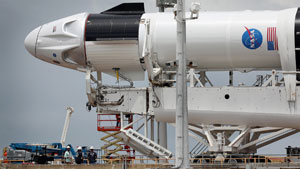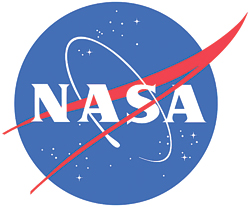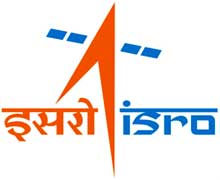April 2021 Science and Technology
Sakshi Education

- NASA/SpaceX successfully launch 4 Astronauts to the ISS
NASA and SpaceX successfully launched four Crew-2 astronauts into Earth orbit. EDT from Launch Complex 39A at NASA’s Kennedy Space Center in Florida. The Crew Dragon spacecraft, named Endeavour, will dock autonomously with the International Space Station’s Harmony module around 5:10 a.m.
In addition to the 4 astronauts, Crew Dragon is delivering almost 250 pounds of cargo, new science hardware and experiments.
This mission features the first reuse of the Crew Dragon spacecraft and Falcon 9 rocket on a crew mission – Crew Dragon Endeavour flew the historic Demo-2 mission and the Falcon 9 flew astronauts on the Crew-1 mission.
For a short time, the number of crew on the space station will increase to 11 people until Crew-1 astronauts Walker, Hopkins, Glover, and Noguchi return on Wednesday, April 28 in the Crew-1 SpaceX Dragon spacecraft Resilience.
The Crew-2 members will conduct science and maintenance during a six-month stay aboard the orbiting laboratory and will return no earlier than Oct. 31.
- DRDO develops SpO2 based supplemental oxygen delivery system
Defence Research and Development Organisation (DRDO) has developed SpO2 (blood oxygen saturation) supplemental oxygen delivery system for soldiers posted at extreme high-altitude areas.
Developed by Defence Bio-Engineering & Electro Medical Laboratory (DEBEL), Bengaluru of DRDO, the system delivers supplemental oxygen based on the SpO2 levels and prevents the person from sinking in to a state of hypoxia, which is fatal in most cases, if sets in. This automatic system can also prove to be a boon during the current Covid-19 situation.
Hypoxia is a state in which the amount of oxygen reaching the tissues is inadequate to fulfill all the energy requirements of the body. This is exactly the situation that gets replicated in a Covid patient due to the virus infection and has been a leading factor in the current crisis.
The electronic hardware of the system is designed for functioning at extreme altitudes featuring low barometric pressures, low temperatures and humidity. The software safety checks incorporated into the system are critical in ensuring the functional reliability of the system in field conditions.
- China's first Mars rover named 'Zhurong'
China’s first Mars rover will be named Zhurong after a traditional fire god, the government announced Saturday. The rover is aboard the Tianwen-1 probe that arrived in Mars orbit on February 24 and is due to land in May to look for evidence of life.
It is part of Chinese space plans that include launching a crewed orbital station and landing a human on the moon. China in 2019 became the first country to land a space probe on the little explored far side of the moon and in December returned lunar rocks to Earth for the first time since the 1970s.
The rover’s title fits with the Chinese name for Mars — “Huo Xing,” or fire star, the China National Space Administration said.
The name “signifies igniting the flame of China’s planetary exploration,” a deputy CNSA administrator, Wu Yanhua, was cited by the official Xinhua News Agency as saying.
The top candidate for the landing site is Utopia Planitia, a rock-strewn plain where the U.S. lander Viking 2 touched down in 1976.
CNSA says Tianwen-1's goals include analysing and mapping the Martian surface and geology, looking for water ice and studying the climate and surface environment.
China would become the third country after the former Soviet Union and the United States to put a robot rover on Mars.
- DRDO develops Single Crystal Blades for helicopter engine application
Defence Research and Development Organisation (DRDO) has developed single crystal blades technology and supplied 60 of these blades to Hindustan Aeronautics Limited (HAL) as part of their indigenous helicopter development program for helicopter engine application.
It is part of a program taken up by Defence Metallurgical Research Laboratory (DMRL), a premium laboratory of DRDO, to develop five sets (300 in number) of single crystal high pressure turbine (HPT) blades using a nickel-based super alloy. The supply of remaining four sets will be completed in due course.
Helicopters used in strategic and defence applications need compact and powerful aero-engines for their reliable operation at extreme conditions. To achieve this, state-of-the-art Single Crystal Blades having complex shape and geometry, manufactured out of Nickel based superalloys capable of withstanding high temperatures of operation are used.
USA, UK, France and Russia have the capability to design and manufacture such Single Crystal (SX) components.
The DMRL undertook this task based on its expertise gained during the development of such a technology for an aero-engine project earlier.
Complete vacuum investment casting process to realise the blades, including die design, wax pattering, ceramic moulding, actual casting of components non-destructive evaluation (NDE), heat treatment and dimensional measurement, has been established at DMRL.
Special ceramic composition had to be formulated for making strong ceramic moulds which can withstand metallostatic pressure of liquid CMSX-4 alloy at 1500°C and above during casting operation.
The challenge of maintaining the required temperature gradient has also been overcome by optimising the casting parameters. A multi-step vacuum solutionising heat treatment schedule for complex CMSX-4 superalloy to achieve the required microstructure and mechanical properties has also been established.
Further, a stringent non-destructive evaluation (NDE) methodology for the blades along with the technique for determining their crystallographic orientations has been developed.
- OneWeb launches another 36 LEO satellites from Russian cosmodrome
OneWeb, a Low Earth Orbit (LEO) satellite communications operator co-owned by Bharti Global and the UK government, launched another batch of 36 satellites by Arianespace from the Vostochny cosmodrome in Russia.
The latest launch takes OneWeb’s total in-orbit constellation to 182 satellites. These would form part of OneWeb’s 648 LEO satellite fleet that will deliver high-speed, low-latency global connectivity.
The latest launch of LEO satellites will enable OneWeb to offer services across the UK, Alaska, Northern Europe, Greenland, Iceland, the Arctic seas and Canada, and will be switched on before the end of the year. OneWeb intends to make global service available next year, including in India.
OneWeb CEO Neil Masterson, in an official statement Monday, said the company is “rapidly building momentum, launching more satellites, demonstrating the network and announcing more distribution signings around the globe”.
Earlier this month, OneWeb inked a memorandum of understanding (MoU) with the Kazakhstan government and local partners to drive the Central Asian nation’s ambitions to digitise its economy, boost connectivity and become a pioneer in satellite communications.
Last November, Bharti Global MD Shravin Mittal had told that OneWeb is open to entering India either directly or through a commercial partnership, involving either the JV route or a bandwidth capacity leasing pact, even as it gears up to launch fast broadband services in the country by June 2022.
Bharti Global is the overseas arm of Bharti Enterprises -- the holding company of Bharti Airtel, India’s second-largest telco.
- Indian Navy Launches Op Samudra Setu-II for Shipment of Oxygen-filled Containers to India
Indian Navy has launched Operation Samudra Setu-II to augment the ongoing national mission for meeting the Oxygen requirements. Mission deployed Indian Naval warships will undertake shipment of liquid Oxygen filled cryogenic containers and associated medical equipment in support of nation’s fight against COVID-19.
Two ships INS Kolkata and INS Talwar have entered port of Manama, Bahrain for embarking and transporting 40MT of liquid oxygen to Mumbai. INS Jalashwa is enroute to Bangkok and INS Airavat to Singapore for similar missions.
Last year Indian Navy had launched Operation Samudra Setu as part of the Vande Bharat Mission and repatriated approx 4000 (3992) stranded and distressed Indian citizens from Maldives, Sri Lanka and Iran.
- NASA aims to land first woman, person of colour on Moon by 2024 under 'Artemis' mission
 The National Aeronautics and Space Administration (NASA), the US space agency, has said that in addition to landing the first woman on the Moon, it also plans to send the first person of colour to the lunar surface as part of its ambitious international spaceflight programme, 'Artemis'.
The National Aeronautics and Space Administration (NASA), the US space agency, has said that in addition to landing the first woman on the Moon, it also plans to send the first person of colour to the lunar surface as part of its ambitious international spaceflight programme, 'Artemis'.
The mission, endorsed by the Biden-Harris administration, aims to land the astronauts on the lunar south pole by 2024 and and create sustainable missions to the earth’s natural satellite by 2028.
The ambitious mission is being regarded as a forward step for diversity. The 'Artemis' program is so named after the Greek goddess of the Moon and the twin sister of Apollo, the inspiration behind Nasa's first moon landing mission.
Last year in November, Nasa had introduced the 18 astronauts who will staff the human spaceflight mission. The group includes nine women and several people of colour, but it is not yet known who the actual "first woman" or the "first person of colour" to touch the lunar surface will be. The initial group of Artemis astronauts also includes Indian American Raja Chari.
On Friday, the US administration under president Joe Biden and vice-president Kamala Harris submitted 2022 budget priorities to Congress.
Nasa's goal to land the first woman and the first person of colour on the Moon under the Artemis programme "aligns with President Biden's commitment to pursue a comprehensive approach to advancing equity for all," said acting Nasa administrator Steve Jurczyk in an official statement.
- First unit of indigenously-built ALH Mk III aircraft commissioned into Indian Navy
Indian Naval Air Squadron (INAS) 323, the first unit of the indigenously-built ALH Mk III aircraft, was commissioned into the Indian Navy in the presence of Union Minister of State for Defence Shripad Naik and Vice Admiral R Hari Kumar, the flag officer commanding-in-chief of Western Naval Command, on Monday.
Addressing the gathering, Shripad Naik said, "The commissioning of INAS 323 marked yet another milestone in the efforts towards enhancing maritime security and safeguarding maritime interests of the nation, as also embodying the spirit of AtmaNirbhar Bharat."
The squadron will operate the state-of-the-art ALH Mk III, a multirole helicopter with Shakti engine manufactured by Hindustan Aeronautics Limited (HAL).
The Mk III version of the ALH has an all-glass cockpit and will be used for search and rescue special operations and coastal surveillance. Sixteen aircraft are under procurement, and they are being delivered in a phased manner to the Indian Navy.
- India's 40th Scientific Expedition to Antarctica Returns to Capetown
The 40th Indian Scientific Expedition to Antarctica (40-ISEA) hosted by the Ministry of Earth Sciences successfully returned to Cape Town on 10 April, after completing a journey of around 12 thousand nautical miles in 94 days, including stopovers.
This achievement concludes four successful decades of India's scientific endeavour in Antarctica. The 40-ISEA comprised Indian scientists, engineers, doctors, and technicians, who began their journey from the Mormugao Port of Goa to Antarctica on 7 January, 2021.
The team reached its destination station Bharati on 27 February, 2021, and Maitri on 8 March, 2021. Bharati and Maitri are India's permanent research base stations in Antarctica. The stations are approachable only during the austral summer season between November and March.
After accomplishing several scientific objectives, changeover of winter crew, and Bharati and Maitri's resupply, the 40-ISEA Indian contingent returned to Cape Town on 10 April, marking four decades of success of the country's scientific endeavour in Antarctica, the Ministry of Earth Science said in a statement.
On its way to Antarctica, the voyage team deployed four autonomous Ocean Observing DWS (Directional Wave Spectra) wave drifters between 35 degree and 50 degree south latitudes in collaboration with Indian National Centre for Ocean Information Services (INCOIS), Hyderabad.
- Russia says to launch own space station in 2025
Russia's space agency said Tuesday it hoped to launch its own orbital station in 2025 as Moscow considers withdrawing from the International Space Station programme to go it alone.
Roscosmos chief Dmitry Rogozin said work had begun on the fist module of a new station, after officials warned that Russia was considering pulling out of the ISS, one of the few successful examples of cooperation with the West.
The announcement came with tensions soaring over espionage claims, a Russian troop build-up along Ukraine's borders and the deteriorating health of President Vladimir Putin's imprisoned critic Alexei Navalny. "The first core module of the new Russian orbital station is in the works," Rogozin said in a statement on messaging app Telegram. He said Russia's Energia space corporation was aiming to have the module "ready for launch" in 2025 and released a video of Energia staff at work. Launched in 1998 and involving Russia, the United States, Canada, Japan, and the European Space Agency, the
Russia's Deputy Prime Minister Yury Borisov said in recent days that Moscow was considering whether to leave the ISS programme from 2025 because of the station's age. Roscosmos said on Monday that a decision on quitting the ISS had not yet been made.
- Ashok Leyland delivers first lot of light bullet proof vehicles to Indian Air Force
Hinduja flagship firm Ashok Leyland on Friday said it has delivered the first lot of light bulletproof vehicles to the Indian Air Force in collaboration with Lockheed Martin.
These modern vehicles were delivered on April 13. The light bulletproof vehicle (LBPV) is an adapted version of Lockheed Martin's CVNG (common vehicle next-gen), the company said in a regulatory filing.
It has been developed under the transfer of technology (TOT) from Lockheed Martin to Ashok Leyland. It is completely indigenised and developed in India, Ashok Leyland added.
LBPV has high off-road mobility in mud, sand, rocks, and shallow water. It can accommodate a crew of 6 with ample cargo space to carry substantial mission equipment.
The vehicle also offers superior protection and combat capability and the crew is well protected from both ballistic and blast threats, it added.
- Asteroid 2001 FO32 Will Safely Pass by Earth March 21
 On 21 March 2021, the largest asteroid predicted to pass by Earth will be at its closest. It won’t come closer than 2 million km to Earth, but it will present a valuable scientific opportunity for astronomers who can get a good look at a rocky relic that formed at the dawn of our Solar System.
On 21 March 2021, the largest asteroid predicted to pass by Earth will be at its closest. It won’t come closer than 2 million km to Earth, but it will present a valuable scientific opportunity for astronomers who can get a good look at a rocky relic that formed at the dawn of our Solar System.
It is called 2001 FO32. There is no threat of a collision with our planet now or for centuries to come.
For comparison, when it is at its closest, the distance of 2 million km is equal to 5¼ times the distance from Earth to the Moon.
Still, that distance is close in astronomical terms, which is why 2001 FO32 has been designated a “potentially hazardous asteroid”.
During this approach, 2001 FO32 will pass by at about 124,000 kph – faster than the speed at which most asteroids encounter Earth.
The reason for the asteroid’s unusually speedy close approach is its highly eccentric orbit around the Sun, an orbit that is tilted 39° to Earth’s orbital plane.
This orbit takes the asteroid closer to the Sun than Mercury, and twice as far from the Sun as Mars.
As 2001 FO32 makes its inner solar system journey, the asteroid picks up speed.
Later, the asteroid slows after being flung back out into deep space and swinging back toward the Sun. It completes one orbit every 810 days (about 2¼ years).
After its brief visit, 2001 FO32 will continue its lonely voyage, not coming this close to Earth again until 2052, when it will pass by at about seven lunar distances, or 2.8 million km.
Even if it is at the smaller end of the scale, 2001 FO32 will still be the largest asteroid to pass this close to our planet in 2021.
The last notably large asteroid close approach was that of 1998 OR2 on April 29, 2020. While 2001 FO32 is somewhat smaller than 1998 OR2, it will be three times nearer to Earth.
The March 21 encounter will provide an opportunity for astronomers to get a more precise understanding of the asteroid’s size and albedo (i.e. how bright, or reflective, its surface is), and a rough idea of its composition.
When sunlight hits an asteroid’s surface, minerals in the rock absorb some wavelengths while reflecting others.
By studying the spectrum of light reflecting off the surface, astronomers can measure the chemical “fingerprints” of the minerals on the surface of the asteroid.
Over 95% of near-Earth asteroids the size of 2001 FO32 or larger have been discovered, tracked, and catalogued.
None of the large asteroids in the catalogue has any chance of impacting Earth over the next century, and it is extremely unlikely that any of the remaining undiscovered asteroids of this size could impact Earth, either. Still, efforts continue to discover all asteroids that could pose an impact hazard.
- ISRO Launched Sounding Rocket RH 560
The Indian Space Research Organization (ISRO) has launched a sounding rocket named RH-560 on March 12, 2021. The purpose of launching the rocket is to study the "vertical changes" in the dynamics of neutral wind and plasma.
The RH-560 rocket was launched from the Sriharikota Range (SHAR) of the Satish Dhawan Space Center (SDSC). ISRO emphasized that the sounding rocket is a one-stage or two-stage solid propellant rocket. These rockets are used to probe the upper atmosphere and conduct space research. Beginning in 1965, ISRO began to launch locally-made sounding rockets.
ISRO announced that it plans to launch an Earth observation satellite on March 28, 2021, which will provide near real-time border images. This will also enable rapid monitoring of natural disasters.
The satellite named GISAT-1 will be launched by the "GSLV-F10 rocket" of the Sriharikota spaceport. The rocket will place the spacecraft in a geosynchronous orbit, which will then be placed in a geostationary orbit with the help of an airborne propulsion system. The orbit is about 36,000 kilometers above the earth's equator.
Amazonia-1: In February 2021, the space organization and the Polar Satellite Launch Vehicle (PSLV-C51) from the Sriharikota Spaceport launched the main satellite called Amazonia-1 of Brazil, as well as 18 passenger satellites.
This is ISRO's first satellite in 2021 during the covid-19 pandemic. This is also the first commercial mission of New Space India Limited (NSIL), which was carried out with the help of Spaceflight Inc. of the United States of America (USA).
- Dr. Harsh Vardhan lays Foundation Stone of CSIR-AMPRI Bamboo Composite Structure
The Minister of Science & Technology, Earth Sciences and Health & Family Welfare, Dr. Harsh Vardhan, has said that CSIR-AMPRI has been successfully adopting ‘Waste to Wealth’ strategy as the institute has developed radiation shielding materials utilizing industrial wastes as raw materials.
Significantly, a novel process for making lead free and highly effective shielding materials useful for the construction of X-ray diagnostic and CT scanner room has been developed utilizing industrial waste namely red mud and fly ash.
Minister was inaugurating the Centre for Advanced Radiation Shielding and Geopolymeric Materials and Analytical High-Resolution Transmission Electron Microscope Laboratory, during his visit to CSIR constituent lab AMPRI based in Bhopal on March 13, 2021.
Minister also laid the foundation stone of CSIR-AMPRI Bamboo Composite Structure.
The Minister pointed out that the Institute is working in the cutting-edge areas of advanced technologies.
It is in the forefront during the pandemic time by undertaking research in collaboration with AIIMS, Bhopal in the area of development of rapid electrochemical based diagnostic for detection of SARS-COV infection.
Various geopolymeric materials were also developed by CSIR-AMPRI utilizing Coal based Thermal Power Plant waste i.e. Fly-Ash and three US patents have been granted on geopolymeric materials.
A unique Centre for Advanced Radiation Shielding and Geopolymeric Materials with a total area of 455.52 Sq.m and Carpet Area of 906.24 Sq.m is being established.
The advances in geopolymeric materials will accelerate strategic applications such as development of Thermal Resistant Geopolymeric Concrete for Missile /Rocket Launching Pad and development of Geopolymeric Bullet Proof Concrete for Bunkers; development of Graphene-Induced Geopolymeric Concrete and Geopolymeric Radiation Shielding Concrete.
In addition, it will also have advanced conventional applications such as development and upscaling of ready mix Geopolymeric Concrete for road applications and structural applications; development of Roller-Compacted Geopolymeric Concrete and development of pre-stressed Geopolymeric Concrete components.
Minister expressed the hope that the Centre will enhance the knowledge for understanding the mechanism of Radiation Shielding and improvement in engineering properties of developed materials.
It will facilitate the upscaling of technologies in this area and provide technological support to Indian industry.
Another major facility inaugurated by Dr Harsh Vardhan at CSIR-AMPRI was the Analytical High-Resolution Transmission Electron Microscope Laboratory.
This laboratory houses Scanning Transmission Electron Microscope (STEM) with High-Angle Annular Dark Field Detector (HAADF) and Energy Dispersive Spectrometer (EDS) along with TEM sample preparation equipment such as, Ion milling system, Ultrasonic disc cutter, Dimple grinder, Disk punch, lapping disk and Diamond saw.
This system is capable of performing microanalysis such as micro diffraction, rocking beam channelling patterns, qualitative and quantitative X-ray spectroscopy analysis, particle size analysis, dislocation density and movement, precipitation, nucleation and growth.
Speaking on the occasion, Dr.Avanish Kumar Srivastava, Director, CSIR-AMPRI, noted that these advanced instruments in CSIR-AMPRI could throw light on the morphological, structural and compositional analysis of advanced materials developed at CSIR-AMPRI.
This facility will not only enhance the research quality of CSIR-AMPRI but also neighbouring institutes of Madhya Pradesh to carry out innovative research on advanced materials and develop know - how / technologies.
The foundation stone for multifunctional CSIR-AMPRI Bamboo Composite Structure was also laid by the Minister.
CSIR-AMPRI has developed a knowhow of manufacturing environmentally friendly multifunctional bamboo composite material for modern housing and structures using abundantly available bamboo as a raw material.
The newly developed bamboo composite material can serve as a competitive, sustainable and environment friendly alternative material, useful in the construction of smart green buildings as it has very attractive features like, aesthetic appearance, acoustic & thermal insulation.
Patents have also been filed on this know-how and also transferred to M/s Permali Wallace private limited.
Dr Harsh Vardhan noted that this will be advantageous to the bamboo cultivators located in various parts of India and also help in the generation of employment.
He observed that while India is the second largest cultivator of bamboo, it has only 4% share of world trade and the bamboo wood technology has potential of increasing this trade share.
- 11th round of talks between India, China underway at Chushul in eastern Ladakh
 The 11th round of talks between India and China is underway at Chushul BPO in eastern Ladakh, in Indian side this morning.
The 11th round of talks between India and China is underway at Chushul BPO in eastern Ladakh, in Indian side this morning.
Corps Commanders of both the countries are to discuss disengagement from remaining friction points in the region.
India conveys concern to US over warship carrying out navigation ops off Lakshadweep.
India on Friday conveyed its concerns to the US after a Navy ship of that country carried out a freedom of navigation patrols in its Exclusive Economic Zone (EEZ) off the coast of Lakshadweep islands.
The External Affairs Ministry said that New Delhi has conveyed its concerns regarding to the US through diplomatic channels.
India’s stated position on the United Nations Convention on the Law of the Sea is that the Convention does not authorise other States to carry out in the EEZ and on the continental shelf, military exercises or manoeuvres, in particular those involving the use of weapons, without the consent of the coastal state.
It added that the USS John Paul Jones was continuously monitored transiting from the Persian Gulf towards the Malacca Straits.
- Bharat Dynamics flags off Akash Missiles for delivery to Indian Army
Bharat Dynamics Ltd (BDL) manufactured Akash Missiles were flagged off by Lt Gen A P Singh, AVSM, Director General and Senior Colonel Commandant, Army Air Defence for delivery to the Indian Army.
BDL manufactures Akash Missiles both for the Indian Army and Indian Air Force. The Akash Weapon System, designed and developed by DRDO (Defence Research and Development Organisation) with 96% indigenous content, is being manufactured by BDL at its Hyderabad Unit with a large number of supply chain partners which include DPSUs, MSMEs and private industry.
Akash Missile has the capability to engage aerial threats up to the maximum range of 25 km and up to an altitude of 20 km, operating at a speed range of 1.8 to 2.5 Mach.
The Missile has been successfully test fired on several occasions and is one of the best missiles in this category.
With the announcement from the Union Cabinet regarding clearance of Akash Weapon System for export, BDL is geared up to take up export order.
BDL has been receiving several leads for export of Akash from various countries which is expected to be converted into firm orders in due course. BDL has a full- fledged facility to meet both domestic and international demands simultaneously.
The focus of BDL has been on ‘Make in India’ with maximum indigenous content and create a Atmanirbhar Bharat in Defence sector. Akash Weapon System is one such product among BDL’s product portfolio in this pursuit for self reliance in Defence.
- DRDO developed Lightweight Bullet proof Jacket for Armed forces
India’s Defence Research and Development Organisation (DRDO) has developed a lightweight bullet-proof jacket that weighs nine kilogrammes and meets the qualitative requirements of the Indian Army, the defence ministry said in a statement on Thursday.
The jacket has been developed by the Kanpur-based Defence Materials and Stores Research and Development Establishment (DMSRDE), which is one of the laboratories of the government-run Defence Research and Development Organisation (DRDO).
Defence Minister Rajnath Singh congratulated the DRDO and its lab DMSRDE for developing the new jacket. "India needs more such innovative product design and development to realise the dream of #AtmaNirbharBharat," he said.
- DRDO develops Advanced Chaff Technology to safeguard naval ships from missile attack
India Defence Research and Development Organisation (DRDO) has developed an Advanced Chaff Technology to safeguard naval ships against enemy missile attack.
A DRDO laboratory in Jodhpur, has indigenously developed three variants of this critical technology namely Short Range Chaff Rocket, Medium-Range Chaff Rocket and Long Range Chaff Rocket meeting Indian Navy’s qualitative requirements.
Chaff is a passive expendable electronic countermeasure technology used worldwide to protect naval ships from enemy’s radar and Radio Frequency missile seekers.
The importance of this development lies in the fact that very less quantity of chaff material deployed in the air acts as decoy to deflect enemy’s missiles for safety of the ships. The technology is being given to the industry for production in large quantities.
- Indian Navy Ships and Aircraft to participate in exercise in LA PEROUSE
Indian Navy Ships INS Satpura (with an integral helicopter embarked) and INS Kiltan along with P8I Long Range Maritime Patrol Aircraft are participating, for the first time; in multi-lateral maritime exercise La Pérouse, being conducted in the Eastern Indian Ocean Region from 05 to 07 Apr 2021.
The Indian Navy ships and aircraft will exercise at sea with ships and aircraft of French Navy (FN), Royal Australian Navy (RAN), Japan Maritime Self Defence Force (JMSDF) and United States Navy (USN) during the three-day exercise at sea.
The exercise La Pérouse, led by French Navy, has participation by FN Ships Tonnerre, an amphibious assault ship and frigate Surcouf. United States Navy is represented in the exercise by amphibious transport dock ship Somerset. Her Majesty’s Australian Ships (HMAS) Anzac, a frigate and tanker Sirius have been deployed by RAN for participation in the exercise while Japan Maritime Self Defence Ship (JMSDF) is represented by the destroyer Akebono. In addition to the ships, integral helicopters embarked onboard ships will also participate in the exercise.
- Ladakh Administration, Leh Hill Council and Solar Energy Corporation of India sign MoU to set up 50-Mega Watt solar power project at Taru in Leh district
In a step towards making Ladakh a carbon-neutral zone a tripartite Memorandum of Understanding was signed yesterday.
Union Territory Administration, Leh Hill Council and Solar Energy Corporation of India Limited (SECI Ltd) have signed MoU to set up a 50 MW solar power project at Taru in Leh district.
Ladakh has a potential of 33GW of renewable energy to contribute nation's efforts in reducing carbon emissions. UT Administration, Leh Hill Council and Solar Energy Corporation of India have signed 1st MoU to harness Solar energy with a 50 MW project at Taru in Leh.
Each megawatt power generated from renewable resources would contribute to employment, economic development locally and to carbon neutrality globally.
- Supernova explosion traced to one of the hottest kind of stars
Indian astronomers have tracked a rare supernova explosion and traced it to one of the hottest kind of stars called Wolf–Rayet stars or WR stars.
The rare Wolf–Rayet stars are highly luminous objects a thousand times that of the Sun and have intrigued astronomers for long. They are massive stars and strip their outer hydrogen envelope which is associated with the fusion of Helium and other elements in the massive core.
Tracking of certain types of massive luminous supernovae explosion can help probe these stars that remain an enigma for scientists.
A team of astronomers from Aryabhatta Research Institute of Observational Sciences (ARIES), Nainital an autonomous institute under the Department of Science & Technology, Govt. of India with international collaborators have conducted the optical monitoring of one such stripped-envelope supernova called SN 2015dj hosted in the galaxy NGC 7371 which was spotted in 2015. They calculated the mass of the star that collapsed to form the supernovae as well as the geometry of its ejection.
The scientists also found that the original star was a combination of two stars – one of them is a massive WR star and another is a star much less in mass than the Sun. Supernovae (SNe) are highly energetic explosions in the Universe releasing an enormous amount of energy. Long-term monitoring of these transients opens the door to understand the nature of the exploding star as well as the explosion properties. It can also help enumerate the number of massive stars.
- ISRO revises launch schedule of GISAT-1 after ‘minor issue’ with satellite
 Indian Space Research Organization (ISRO) revised the timetable for launching the geographic imaging satellite GISAT-1 on the GSLV-F10 rocket.
Indian Space Research Organization (ISRO) revised the timetable for launching the geographic imaging satellite GISAT-1 on the GSLV-F10 rocket.
The spacecraft was originally scheduled to launch on March 28. However, due to minor issues, it will now be launched from the Sriharikota spaceport on April 18. The launch was originally scheduled for March 5, 2020, but it was postponed due to technical reasons.
GSAT is a class of imaging satellites in the geostationary orbit of India. It has high time resolution, in addition to real-time monitoring, it also helps to provide near real-time imaging and fast revisiting functions.
Two identical satellites will provide a resolution of 42 to 318 m. It will also carry multi-spectral and multi-resolution imaging instruments. GISAT-1 is the first most advanced agile earth observation satellite. It will be placed in the geosynchronous transfer orbit by GSLV-F10.
The satellite weighs about 2,268 kilograms and will help to observe the Indian subcontinent in real time at close intervals at frequent intervals without clouds. It will generate selected field images every 5 minutes. Every 30 minutes, it will provide images of the entire Indian continent at a spatial resolution of 42 m.
The satellite consists of a 700mm Ritchey-Chretien telescope based on the Cartosat-2A design. It also installed array detectors in the visible and near-infrared (VNIR) and short-wave infrared (SWIR) bands.
ISRO’s Earth observation satellites have successfully established many operational applications across the country. At the central and state levels, a large number of users use space-based input for multiple purposes.
Some important tasks of ISRO make possible the unique applications of space-based imaging, including Cartosat-1, Cartosat-2, Resourceat-1, Resourceat-2, Oceansat-1, Oocensat-2, Risat-1, Megha-Tropiques, INSAT series , SARAL, Scatsat, etc.
- NASA-ISRO Joint Mission on Climate Change and Disaster Study
NASA and ISRO are collaborating to develop a satellite called NISAR. The satellite will be launched into near-polar orbit from the Satish Dhawan Space Center in Sriharikota, India in 2022.
In the three-year mission of imaging the earth’s land, ice sheets and sea ice, it will scan the earth every 12 days to provide an "unprecedented" panorama of the earth.
It can detect that in an area that is only half the size of a tennis court, the movement of the planet's surface is only 0.4 inches.
NASA will provide one of the satellite radars, a high-speed communication subsystem for scientific data, a GPS receiver and a payload data subsystem.
ISRO will provide the spacecraft bus, the second type of radar (called S-band radar), launch vehicles and related delivery services.
NISAR will be equipped with the largest reflector antenna in NASA's history. Its main goals include tracking subtle changes in the Earth's surface, detecting warning signs of impending volcanic eruptions, helping monitor groundwater supply and tracking the rate of ice cap melting.
NISAR is the abbreviation of NASA-ISRO-SAR. SAR refers to the synthetic aperture radar used by NASA to measure changes in the earth's surface.
- All about NASA-ISRO SAR (NISAR) Satellite
NASA and ISRO are collaborating on developing an SUV-sized satellite called NISAR, which will detect movements of the planet’s surface as small as 0.4 inches over areas about half the size of a tennis court.
The satellite will be launched in 2022 from the Satish Dhawan Space Center in Sriharikota (Andhra Pradesh) into a near-polar orbit.
The name NISAR is short for NASA-ISRO-SAR.
SAR here refers to the Synthetic Aperture Radar that NASA will use to measure changes in the surface of the Earth.
It refers to a technique for producing high-resolution images. Because of the precision, the radar can penetrate clouds and darkness, which means that it can collect data day and night in any weather.
It will scan the globe every 12 days over the course of its three-year mission of imaging the Earth’s land, ice sheets and sea ice to give an unprecedented view of the planet.
NASA will provide one of the radars for the satellite, a high-rate communication subsystem for science data, GPS receivers and a payload data subsystem.
NISAR will be equipped with the largest reflector antenna ever launched by NASA.
ISRO will provide the spacecraft bus, the second type of radar (called the S-band radar), the launch vehicle and associated launch services.
NISAR's data can help people worldwide better manage natural resources and hazards, as well as providing information for scientists to better understand the effects and pace of climate change.
The images will be detailed enough to show local changes and broad enough to measure regional trends.
As the mission continues for years, the data will allow for better understanding of the causes and consequences of land surface changes.
It will also add to our understanding of our planet's hard outer layer, called its crust.
- DPIIT upgrades Industrial Entrepreneurs Memorandum portal
With a view to enhancing ease of doing business and transparency, the DPIIT has revamped its Industrial Entrepreneurs Memorandum (IEM) portal. The upgraded portal offers single IEM for one company to capture details of all its locations and sectors.
This Single form will facilitate filling of investment intentions (IEM-Part A) and reporting of commencement of production (IEM-Part B) in a seamless manner. Any amendments to the IEMs may also be done easily with respect to previously filed IEMs. This entire process avoids duplication in filling information.
All approvals will be communicated on emails and SMS in purely paperless manner to applicants. Simultaneous information shall also send to concerned State Governments. The G2B portal can be accessed at http://services.dipp.gov.in for the purpose of submitting application and obtaining the IEM certificate.
DPIIT operates the G2B Portal for receiving application of Industrial Entrepreneurs to file an Industrial Entrepreneurs Memorandum (IEM) under Industries (Development and Regulation) Act, 1951.
Published date : 19 Apr 2021 02:54PM



















